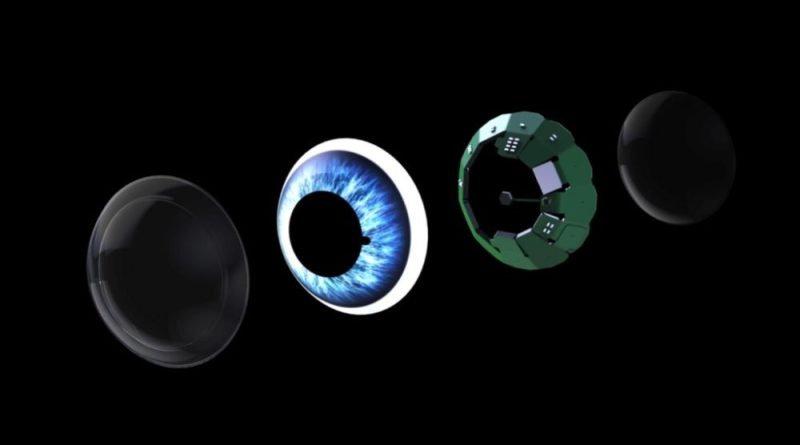Contact Lenses With Augmented Reality Could Eventually Replace Your Phone’s Screen
People craning their necks to look at their phones can be seen on any street. But, thanks to augmented reality, in the not-too-distant future, we’ll probably just stare at digital information hovering over the world in front of us, taking in a blend of the digital and real worlds (AR). Engineers in Saratoga, California, are working to realize such a future, producing prototypes of smart contact lenses stuffed with tiny circuits, batteries, and displays.
For years, technologists have debated what would come next after mobile devices replaced desktop computers as our primary access point to the internet. Meta CEO Mark Zuckerberg is betting on the metaverse, an immersive virtual world accessed through a headset. The bigger shift, however, will be to augmented reality (AR), in which glasses or contact lenses display online feeds blended into our view of the real world. It will help with multitasking. Phones will increasingly resemble mini servers that coordinate our wearable devices such as ear buds, watches, and eyewear.
Mojo Vision’s lenses are one of Silicon Valley’s most ambitious hardware projects. The company had to create its own chemicals and plastic compounds to allow an eyeball to breathe through an electronic lens. The lens was noticeably thick, extending beyond the iris to cover parts of the whites of the eyes. It contains nine titanium batteries similar to those used in cardiac pacemakers, as well as a flexible circuit no wider than a human hair. A slightly convex mirror bounces light off a tiny reflector, simulating a telescope, to magnify the display. That tiny display appears to be a pinprick of light from a few feet away.
People could watch TikTok videos on this lens someday, but Mojo Vision wants the lens to be useful. It is also developing a lens for visually impaired people that display glowing digital edges overlaid on objects to make them easier to see. It’s also testing different interfaces with companies that make phone apps for running, skiing, and golfing in order to create a new type of hands-free display of activity. Sinclair claims that, barring regulatory delays, consumers will be able to purchase a Mojo lens with a custom prescription in less than five years. That may be an ambitious timeline, given that other AR projects have been delayed or, like Google Glass, have failed to live up to expectations.
Alphabet, Google’s parent company, also failed to deliver a smart contact lens for medical use, but Big Tech firms have largely driven VR and AR development. Apple is developing lightweight augmented reality glasses that it plans to release later this decade. Apple is also expected to release a mixed-reality headset next year. Facebook’s Quest 2 headset currently dominates VR device sales, but the company is also racing to launch its first AR glasses in 2024, as previously reported.
Why is it taking so long to develop augmented reality? Because it combines digital and physical elements in a constantly changing view. This is a difficult task that necessitates a significant amount of processing power. Nonetheless, our desire to keep at least one foot in the real world means we’ll end up spending more time in AR.
The big question is how to be present in one’s real-world life while constantly being exposed to digital information. It only takes a few seconds these days to pull out a phone, open an app, and perform a task on its screen. We’ll be able to enter an app in the future by simply looking at it for an extra second. This will raise a slew of difficult questions about addiction and how we interact with the world around us.
This concern was raised by Mojo Vision executive years ago when the iPhone was being developed: “I can’t say how we at Mojo are going to completely mitigate that.” But the trend is that people will have instant access to information.” Whether with contact lenses or glasses, the human eye will point to a world swimming in more digital information than ever before, giving our brains a lot to adjust to.



